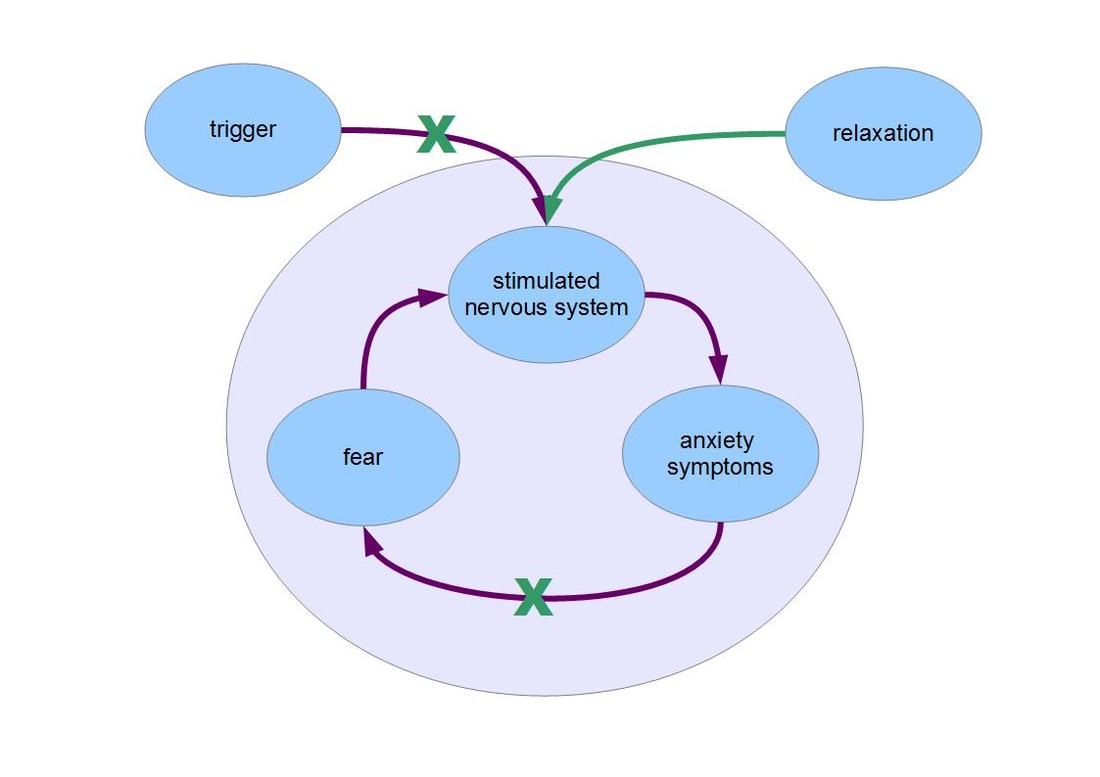Now let us examine the places in the anxiety cycle where we may be able to interrupt or change it.
Firstly, and most obviously, removing the trigger will help to remove some of the stimulation to the nervous system. Some kinds of triggers may be relatively easy to remove, while others may not. For example, traumatic events that have already occurred cannot be undone, but anxiety-producing thinking patterns may be able to be altered with some effort and practice.
Secondly, the nervous system may be able to be calmed using the opposite of the fear response, the relaxation response. While the fear response involves the sympathetic nervous system, the relaxation response involves the parasympathetic nervous system. Invoking the relaxation response can alter the balance of the nervous system away from sympathetic dominance towards a more normal balanced state.
Thirdly, the link between anxiety symptoms and fear can be removed, or at least reduced. This link is what Dr. Claire Weekes refers to as “second fear”, the fear of the anxiety itself. It is this “second fear” that can perpetuate an anxiety disorder long after the trigger has gone. If we can learn to break this link, we need never fear an anxiety attack again.
Interrupting the cycle at any of these three places will be helpful in reducing anxiety; however addressing all three together will be the most effective approach. Now that we know where to break the anxiety cycle, we can introduce specific techniques to do this.
Secondly, the nervous system may be able to be calmed using the opposite of the fear response, the relaxation response. While the fear response involves the sympathetic nervous system, the relaxation response involves the parasympathetic nervous system. Invoking the relaxation response can alter the balance of the nervous system away from sympathetic dominance towards a more normal balanced state.
Thirdly, the link between anxiety symptoms and fear can be removed, or at least reduced. This link is what Dr. Claire Weekes refers to as “second fear”, the fear of the anxiety itself. It is this “second fear” that can perpetuate an anxiety disorder long after the trigger has gone. If we can learn to break this link, we need never fear an anxiety attack again.
Interrupting the cycle at any of these three places will be helpful in reducing anxiety; however addressing all three together will be the most effective approach. Now that we know where to break the anxiety cycle, we can introduce specific techniques to do this.

 RSS Feed
RSS Feed
